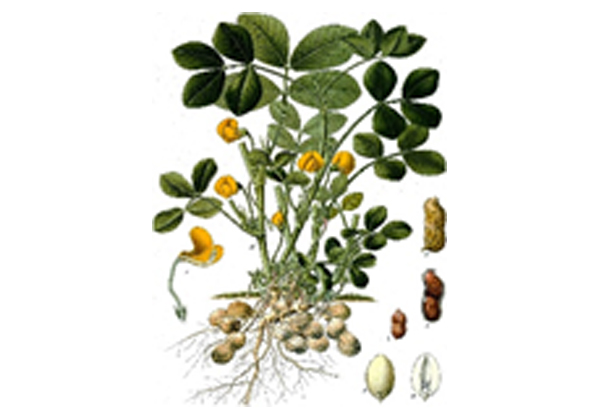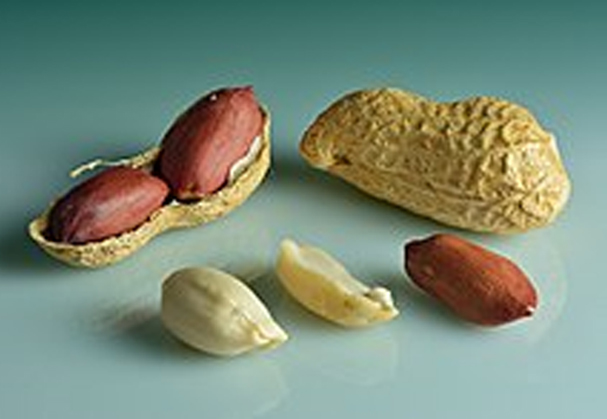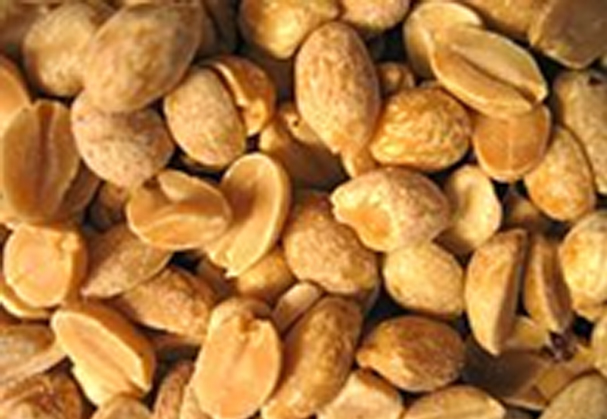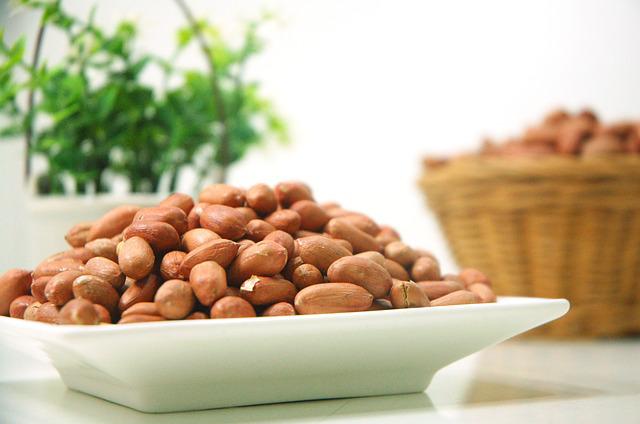Several studies have shown that nutrients found in Arachis hypogaea, including folate, phytic acid, phytosterols, and resveratrol (antioxidant), may have anti-cancer effects. They are a good source of vitamin E, a fat-soluble antioxidant that stops the production of ROS created when fat undergoes oxidation.
Because it has a mild flavor and a relatively high smoke point, Peanut oil is often used in cooking. It is considered more healthful than saturated oils due to its high monounsaturated content and is resistant to rancidity.
Arachis hypogaea

Peanut tree

Peanuts shell & seeds

Peanuts seeds
Arachis hypogaea
Fabaceae
groundnut, goober (US), pindar (US) or monkey nut (UK)
It is widely grown in the tropics and subtropics
Seeds
The peanut is an annual herbaceous plant growing 30 to 50 cm tall.
The leaves are opposite and pinnate with four leaflets. The flowers are 1 to 1.5 cm across, and yellowish orange with reddish veining borne in axillary clusters on the stems above ground, and last for just one day. The ovary is located at the base of what appears to be the flower stem but is a highly elongated floral cup.
Peanut fruits develop underground, after fertilization, a short stalk at the base of the ovary elongates to form a thread-like structure known as a “peg”. This peg grows down into the soil, allowing the fruit to develop underground. These pods are 3 to 7 cm long, normally containing one to four seeds. The shell of the peanut fruit consists primarily of mesocarp with several large veins traversing its length.
Peanuts are rich in essential nutrients and an excellent source of several B vitamins, vitamin E, several dietary minerals, such as manganese, magnesium and phosphorus, and dietary fiber. They also contain about 25 g of protein per 100 g.
Peanuts are used to help fight malnutrition. Peanut-based pastes high-protein, high-energy, and high-nutrient are developed to be used as therapeutic food to aid in famine relief.
Peanut oil is often used in cooking, because it has a mild flavor and a relatively high smoke point. Due to its high monounsaturated content, it is considered more healthful than saturated oils, and is resistant to rancidity.
Some studies show that regular consumption of peanuts is associated with a lower specific risk of mortality from certain diseases.
According to the US Food and Drug Administration, “Scientific evidence suggests but does not prove that eating 1.5 ounces per day of most nuts (such as peanuts) as part of a diet low in saturated fat and cholesterol may reduce the risk of heart disease.
Specification Data Sheet:
This Sudanese standard is formulated by the technical committee No.4 formed according to the administrative decree of the SSM0/1/A/I dated 18/8/01. It applies to Peanuts.
On formulating this standard the committee has referred to international publications and works of Sudanese researchers on the subject.


